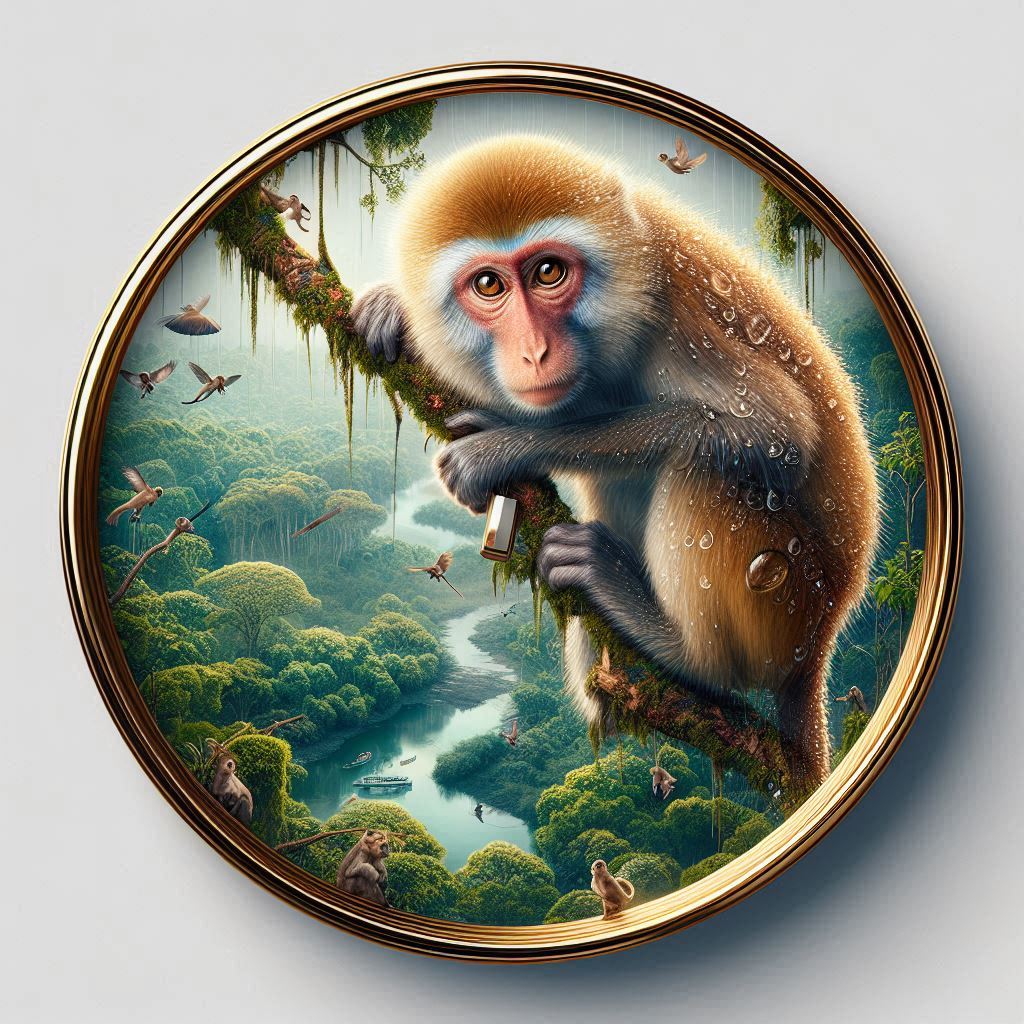
Climate Change and Its Impact on Monkey Habitats
Share
Climate Change and Its Impact on Monkey Habitats
Climate change is one of the greatest environmental challenges of our time, and its effects are being felt across ecosystems worldwide. For many species, including monkeys, the changing climate is a growing threat that disrupts habitats, food sources, and migration patterns. As temperatures rise, rainfall patterns shift, and extreme weather events become more frequent, the delicate balance of monkey habitats is being put to the test. In this article, we’ll explore how climate change is affecting monkey ecosystems and discuss potential strategies to mitigate these impacts.
The Direct Impact of Climate Change on Monkey Habitats
Monkeys, like many other animals, rely on stable environments to thrive. However, the increasing effects of climate change are putting their habitats at risk in several ways:
1.
Habitat Loss
As temperatures rise and extreme weather events become more frequent, many of the forests and other ecosystems that monkeys depend on are at risk of degradation or destruction. For example, tropical rainforests, which are home to numerous monkey species, are highly sensitive to temperature fluctuations and changes in precipitation. A decrease in rainfall can lead to droughts, which not only limit water and food sources but also make the forest canopy less dense and fragmented.
2.
Food Shortages
Monkeys are highly dependent on the availability of fruits, leaves, insects, and other food sources found in their native habitats. Shifts in climate can cause changes in the growth cycles of plants and disrupt the availability of these food sources. In particular, the alteration of flowering and fruiting seasons can lead to periods of scarcity for monkeys, impacting their nutrition and reproduction rates.
3.
Altered Migration Patterns
Monkeys often rely on migratory routes and seasonal patterns to find food or adjust to environmental changes. Climate change can interfere with these patterns by altering the temperature and rainfall cues that guide migration. As a result, monkeys may be forced to move to new areas, potentially leading to conflict with human populations or other wildlife, as well as difficulties in finding suitable habitats.
4.
Increased Disease Risk
Rising temperatures and changing weather patterns can also influence the spread of diseases. As certain vectors, such as mosquitoes, expand their range due to warmer climates, new diseases may emerge and affect both humans and monkeys. For example, the spread of viruses like malaria and dengue fever could have detrimental effects on monkey populations.
Monkeys Most at Risk from Climate Change
Certain species of monkeys are more vulnerable to climate change due to their specific habitat requirements. Examples of species at high risk include:
-
Golden Lion Tamarins: These monkeys are native to Brazil’s Atlantic Forest, which is experiencing increased deforestation and the effects of climate change.
-
Mountain Gorillas: These gorillas, found in the volcanic mountains of Rwanda and Uganda, are vulnerable to shifting weather patterns that affect their forested habitats.
-
Proboscis Monkeys: Indigenous to the rainforests of Borneo, these monkeys face habitat loss from both climate change and human encroachment.
-
Titi Monkeys: Living in the Amazon rainforest, they are vulnerable to changes in the forest’s rainfall and temperature, affecting their food supply and shelter.
What Can Be Done to Mitigate the Effects of Climate Change on Monkey Habitats?
While the challenges are immense, there are several strategies that can help mitigate the impacts of climate change on monkey populations:
1.
Habitat Conservation and Restoration
Efforts to protect existing forests and restore degraded habitats are essential for the survival of monkeys. By creating protected areas and promoting sustainable land use, we can help ensure that monkeys have access to stable, healthy environments. Reforestation projects and the restoration of corridors between fragmented habitats can help monkeys adapt to changing conditions.
2.
Sustainable Forestry and Land Management
Promoting sustainable agriculture and forestry practices is crucial. Practices like selective logging, agroforestry, and preventing slash-and-burn agriculture can reduce habitat loss and preserve critical ecosystems for monkeys. Local communities should be engaged in efforts to protect forests while also providing alternative livelihoods that are not harmful to the environment.
3.
Monitoring and Research
Monitoring the health of ecosystems and monkey populations allows researchers to detect and respond to changes more quickly. Long-term climate and wildlife monitoring programs can provide valuable data on how changing climates are affecting species and can help guide conservation efforts.
4.
Climate Change Mitigation Strategies
On a global scale, reducing carbon emissions and investing in renewable energy sources can slow the pace of climate change and help protect vulnerable habitats. Governments and international organizations must implement and enforce policies to reduce emissions, encourage sustainable development, and combat deforestation.
5.
Community Engagement and Education
Raising awareness about the impacts of climate change on wildlife is vital. Community-based conservation programs that engage local populations in protecting wildlife and understanding the impacts of climate change can help shift behaviors and create a more sustainable relationship between humans and the environment.
Conclusion: A Call to Action for Monkey Conservation
The impact of climate change on monkey habitats is undeniable, but it is not too late to make a difference. By protecting and restoring monkey habitats, promoting sustainable land practices, and addressing the root causes of climate change, we can help ensure that future generations of monkeys continue to thrive. Conservation efforts, combined with global action on climate change, hold the key to preserving these incredible animals and the ecosystems they inhabit.
Suggested SEO Keywords:
climate change impact on monkeys, monkey habitat loss, endangered monkeys and climate change, conservation of primates, climate change and wildlife, protecting monkeys from climate change, monkey population decline, sustainable forest practices for monkeys, preserving monkey habitats
